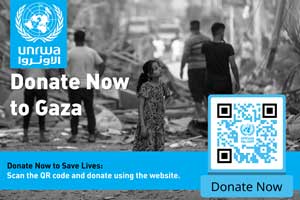AMMAN — A total of 43,704 Syrian refugees voluntarily returned home from Jordan between December 8, 2024, and February 22, 2025, according to data from the United Nations High Commissioner for Refugees (UNHCR).
The data shows that among the returnees, 23,867 were male and 19,837 were female. The largest group of male returnees fell within the 18-35 age range (8,166 individuals), followed by those aged 36-59 (5,241 individuals).
For female returnees, the 18-35 age group was also the largest, comprising 5,913 individuals, followed by the 36-59 age group with 3,923 individuals, Al Mamlaka TV, reported.
Regarding the type of return, the data indicated that 70 per cent of the returning families made a full return, totalling 30,605 families, while 30 per cent, or 13,099 families, made a partial return.
The returnees had previously resided in different Jordanian governorates before returning to Syria. A total of 10,560 individuals lived in Amman, 10,172 in Irbid, and 7,479 in Mafraq, while 8,345 were in other areas.
Additionally, 4,594 refugees had been in the Zaatari camp, 2,393 in the Azraq camp and a smaller number in the Emirati-Jordanian camp (EJC).
The data also showed that 84 per cent of returnees had lived in urban areas before returning to Syria, while 16 per cent had lived in refugee camps.
In terms of the returnees’ original provinces in Syria, the largest group came from Daraa, with 14,650 returnees, followed by 10,951 from Homs and 5,607 from rural Damascus. Other notable figures included 2,237 returnees from Damascus and 1,850 from Aleppo.
According to the Ministry of Interior, 42,675 Syrians have left Jordan through the Jaber border crossing since the fall of the Bashar Al Assad regime.
The ministry noted that 7,117 refugees left Jordan from the camps, while 35,558 left from various other areas of the Kingdom, confirming that all Syrians who left the Kingdom did so "voluntarily".
Jordan is currently hosting some 1.3 million Syrian refugees, including 660,000 registered with the UNHCR, as well as some 61,000 Iraqi refugees.

